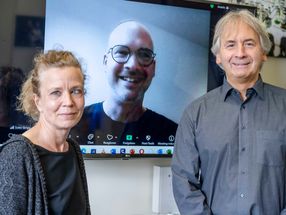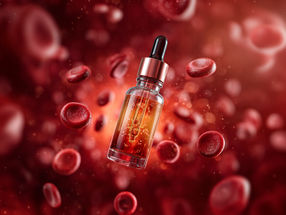Physicists observe magnetism in gas for the first time
An international team of physicists has for the first time observed magnetic behaviour in an atomic gas, addressing a decades-old debate as to whether it is possible for a gas or liquid to become ferromagnetic and exhibit magnetic properties.
"Magnets are all around us – holding postcards on the refrigerator, pointing to magnetic north on a compass, and in speakers and headphones – yet some mysteries remain," says Joseph H. Thywissen, a professor of physics at the University of Toronto and a visiting member of the Massachusetts Institute of Technology-based team leading the research. "We have perhaps found the simplest situation in which permanent magnetism can exist."
The scientists observed the behaviour in a gas of lithium atoms trapped in the focus of an infrared laser beam. The gas was cooled to 150 nK, less than a millionth of a degree above absolute zero, which is at -273 C. When repulsive forces between the atoms were gradually increased, several features indicated that the gas had become ferromagnetic. The cloud first became bigger and then suddenly shrunk, and when the atoms were released from the trap, they suddenly expanded faster. These observations were reported in Science, in a paper titled "Itinerant Ferromagnetism in a Fermi Gas of Ultracold Atoms".
This and other observations agreed with theoretical predictions for a transition to a ferromagnetic state. Ferromagnetic materials are those that, below a specific temperature, become magnetized even in the absence of a strong magnetic field. In common magnets, such as iron and nickel that consist of a repeating crystal structure, ferromagnetism occurs when unpaired electrons within the material spontaneously align in the same direction.
"Magnetism only occurs in a strongly interacting regime, where calculations – even using today's fastest computers – are difficult," says Thywissen. "Since naturally occurring gases do not have strong enough interactions to address the question, we turned to ultra-cold gases for answers."
If confirmed, these results may enter textbooks on magnetism, showing that a gas of fermions does not need a crystalline structure to exhibit magnetic properties. "The evidence is pretty strong, but it is not yet a slam dunk," says MIT physics professor and co-principal investigator David E. Pritchard. "We were not able to observe regions where the atoms all point in the same direction. They started to form molecules and may not have had enough time to align themselves."
Most read news
Other news from the department science

Get the chemical industry in your inbox
By submitting this form you agree that LUMITOS AG will send you the newsletter(s) selected above by email. Your data will not be passed on to third parties. Your data will be stored and processed in accordance with our data protection regulations. LUMITOS may contact you by email for the purpose of advertising or market and opinion surveys. You can revoke your consent at any time without giving reasons to LUMITOS AG, Ernst-Augustin-Str. 2, 12489 Berlin, Germany or by e-mail at revoke@lumitos.com with effect for the future. In addition, each email contains a link to unsubscribe from the corresponding newsletter.


























































